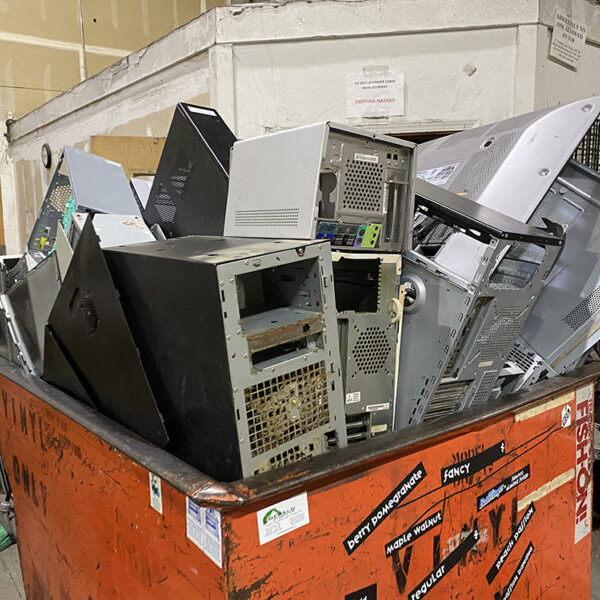Where Does Our E-waste Go?
We were asked recently where the electronics recycling for Orcas goes, so we decided to go check it out. Turns out it goes to a cool little operation north of Lynnwood, WA called E-Wastes. We got a tour from company president Sam Kim.
E-Waste is basically your standard warehouse space, with 8 to 10 employees armed with cordless screw drivers, tearing down all kinds of electronics—we saw toys, TVs, computers, printers–everything.
In 2016 Washington State passed the E-Cycle Washington program. Designed to help keep toxins like mercury and other heavy metals out of the environment, the Sate program forces the manufacturers to pay for the recycling of their products at the end of their life. Programs like these are awesome, and are referred to as “Extended Producer Responsibility” or “EPR” Laws.
EPR is a growing and positive trend in the waste management industry, as corporations are held responsible for the end life of the products they make. Similar programs exist now for fluorescent light bulbs and paint. Others are coming down the pike for materials like carpet, batteries and other toxic products.
One day bottling and packaging companies may be held responsible for the plastic wastes they create, as they are now in some parts of Canada and Europe.
Speaking of plastic: When you walk into E-Wastes, you see huge boxes (or totes, or gaylords) full of plastic waste. Suddenly you realize that when your home electronics projects get broken down, the vast majority of what you get in the end is plastic.
And as Sam described, there is very little to reuse; but lots to recycle.
Plastics, metals, wires, screens and glass. All of it separated into like materials, and then sold. All of it has wildly different values; glass and plastics near the bottom; metals and copper wires are better.
For E-Wastes, the best stuff is in the computers—RAM memory chips have gold foil in them. Hard drives have precious metals. There is a market also for circuit boards—also for trace precious metals.
The rest of the stuff is baled for recycling. We were surprised to hear that he had end markets for all the plastic—but he does.
The State created the recycling program to handle toxic wastes—so he does that too. Old tube-TVs and monitors contain hazardous amounts of mercury and lead. Sam’s crew has to carefully remove these tubes, and then package and dispose of them properly as hazardous waste.
We asked him how odd it was that flat panels have become a part of the collection program, even without glass tubes. But he informed us that many flat panel displays are lit by mercury-containing light tubes (like a small fluorescent tube) and they are required to collect these as well.
It’s a gritty business, and hard work for his crew. The margins are pretty tough with these materials as well, says Sam. “Without the funding that comes from the E-Cycle program there would not be a way to fund this type of operation,” he says.
We are fortunate to have this program in our state. ORS is a big supporter of EPR programs that put the cost of recycling back on the manufacturers. Here are some interesting links where you can learn more:
An article we wrote on the subject a few years ago: https://exchangeorcas.org/recycling-whose-responsibility-is-it-anyways/
Here’s the E-Cycle Program website.
Here’s a link to our partner on all things EPR: Zero Waste Washington

